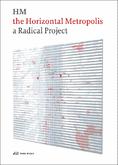spatial planning large scale plans & projects city-regions innovation giornata di studi inu parks heritage citizenship superplaces safety & security sprawl economics premi tesi di dottorato technology central places tourism rural areas agriculture land use waterfronts & harbors infrastructures regulation maps social exclusion/integration urbanism
The Horizontal Metropolis
A Radical Project
Chiara Cavalieri and Paola Viganò (eds.)
Two contrasting terms are joined to conjugate the traditional idea of metropolis with horizontality; to combine the center of a vast territory—hierarchically organized, dense, vertical, and produced by polarization—with the idea of a more diffuse, isotropic urban condition, where center and periphery blur. Beyond a simplistic center versus periphery opposition, the concept of a horizontal metropolis reveals the dispersed condition as a potential asset, rather than a limit, to the construction of a sustainable and innovative urban dimension.
Around 1990, Terry McGee, an urban researcher at University of British Columbia, coined the term desakota, deriving from Indonesian “desa” (village) and “kota” (city). Desakota areas typically occur in Asia, especially South East Asia. The term describes an area situated outside the periurban zone, often sprawling alongside arterial and communication roads, sometimes from one agglomeration to the next. They are characterized by high population density and intensive agricultural use, but differ from densely populated rural areas by more urban-like characteristics.
The Horizontal Metropolis investigates such areas alongside examples in the US, Italy, and Switzerland. The study highlights the advantages of the concept and its relevance under economical, ecological, and social aspects. The concept reflects a vision of global urbanization that does no longer allow for “outside” areas and that will test the urban ecosystem to its limits.

ABOUT THE AUTHORS
Chiara Cavalieri is an architect and Professor of Urbanism and Territorial Management at the Université Catholique de Louvain (UCLouvain) in Belgium and member of the executive committee of the Habitat Research Center at EPFL in Lausanne.
Paola Viganò is Professor at EPFL in Lausanne and the University Iuav of Venice. She has been a visiting professor at Harvard Graduate School of Design and at multiple European schools, and is a founding member of the European Postgraduate Master in Urbanism (EMU).
Online resources and links




Planum
The Journal of Urbanism
ISSN 1723-0993
owned by
Istituto Nazionale di Urbanistica
published by
Planum Association
ISSN 1723-0993 | Registered at Court of Rome 4/12/2001, num. 514/2001
Web site realized by ChannelWeb & Planum Association | Powered by BEdita 3





